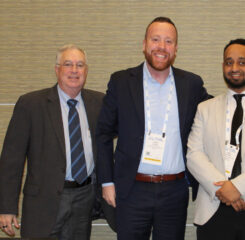Reports Look at Older Adults in Public Housing
The Urban Institute has released two reports older adults and persons with disabilities living in public housing. The first report looks at the demographics of public housing residents and the second offers case studies of how five public housing authorities are working to address the needs of older adult residents and residents with disabilities.
Demographics of Older Adults in Public Housing
The first report, “The Future of Public Housing,” finds that almost one-fifth of all 1.6 million public housing residents are older adults, a greater concentration of older adults than in the general population where one-sixth of the U.S. population is an older adult (62+).
Researchers found that despite the drop in the number of public housing homes nationwide, the share of older adults in public housing has increased since 2016.
In 2021, older adult heads of household in US public housing shared the following demographic characteristics:
- About two-thirds were female (in comparison, three-quarters of all public housing heads of household were female.
- More than a third were Black, and about one-fifth were Hispanic.
- Their households had an average total annual income of $16,602, only slightly lower than the average total annual income of all households in public housing.
- Almost all (95 percent) had fixed income, and smaller shares had wage income (11 percent) and some form of public assistance (5 percent).
- Among those who had an income source, the average fixed income was $14,159, the average wage income was $24,549, and the average income from public assistance was $1,926.
- About one-fifth of the older adults were at least 80 years of age.
Five Public Housing Authority Case Studies
The second report, “Meeting the Challenge: Serving Older Adults and People with Disabilities in Public Housing,” looks closely at five public housing authorities “that are taking active approaches to supporting their older adult residents and residents with disabilities.”
Urban researchers conducted virtual site visits with staff and residents at the Minneapolis Public Housing Authority, Housing Authority of the City of Pittsburgh, Denver Housing Authority, Westbrook Housing Authority in Maine, and Housing Authority of Kansas City in Missouri.
For example, the Minneapolis Public Housing Authority (MPHA) has six properties offering assisted living services—two of which also provide memory care—through partnerships with Cassia, the Korean Service Center, and Volunteers of America. Cassia and Volunteers of America are LeadingAge members. As Urban describes in its report, MPHA provides space in its senior center to multiple community partners that offer various health care and other services and it is currently discussing rental assistance demonstration (RAD) conversions for its senior properties, which would provide financing to make its buildings more suitable for aging in place.
“As the public housing population shifts, housing agencies will need to serve as the central connecting point for residents to access resources and support. But agencies face many barriers to delivering critical services, including lack of federal and state funding, low staff capacity, and limited resources,” Urban says.
The case studies look at services and Service Coordinators (including food security, physical and mental health wellness, homemaker and personal care assistance, social activities, technology, support for grandfamilies, service gaps), partnership, and funding of services.
In addition, Urban talked about resources and supports for older adult residents and residents with disabilities with representatives from the three national public housing agency trade associations, the Council of Large Public Housing Authorities, National Association of Housing and Redevelopment Officials, and Public Housing Authorities Directors Association.
The report’s key takeaways:
- Older adult residents and residents with disabilities have diverse social, health, and functional circumstances.
- Service coordinators provide critical support, but housing authorities do not receive adequate funding for the role.
- Partnerships are key to helping address residents’ diverse needs.
- Even with multiple partnerships, housing authorities still experience gaps in services.
- Trust is key to engaging residents in services and programming.
The second report’s lead researcher, Alisha Sanders, is the director of health and housing development and support with Volunteers of America National Services and was previously the senior director of housing and services research at LeadingAge.
The Future of Public Housing: Special Issues Facing Older Adults and People with Disabilities
Meeting the Challenge: Serving Older Adults and People with Disabilities in Public Housing

Most Recommended
October 15, 2025
 Shutdown Week Three: Impact of Ongoing Closure on Affordable Housing
Shutdown Week Three: Impact of Ongoing Closure on Affordable Housing
December 10, 2025
Fiscal Year (FY) Funding 2026
October 07, 2025
Immigrant Workforce Matching Program Brings Workforce Relief
Recently Added
December 17, 2025
 Colleagues on the Move, December 17, 2025
Colleagues on the Move, December 17, 2025
December 16, 2025



